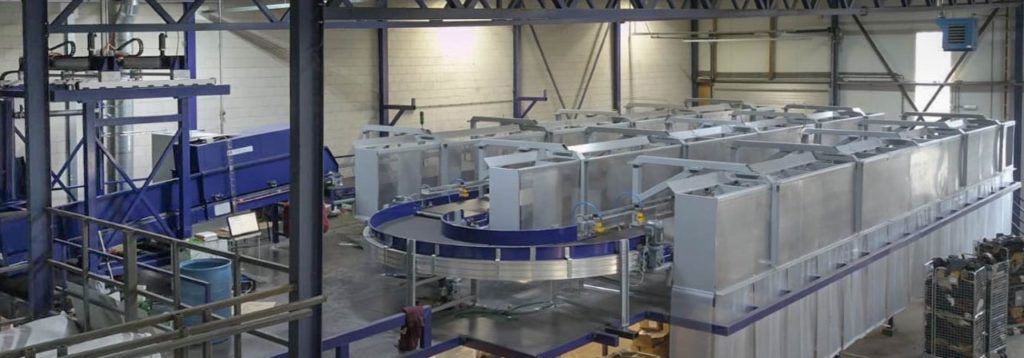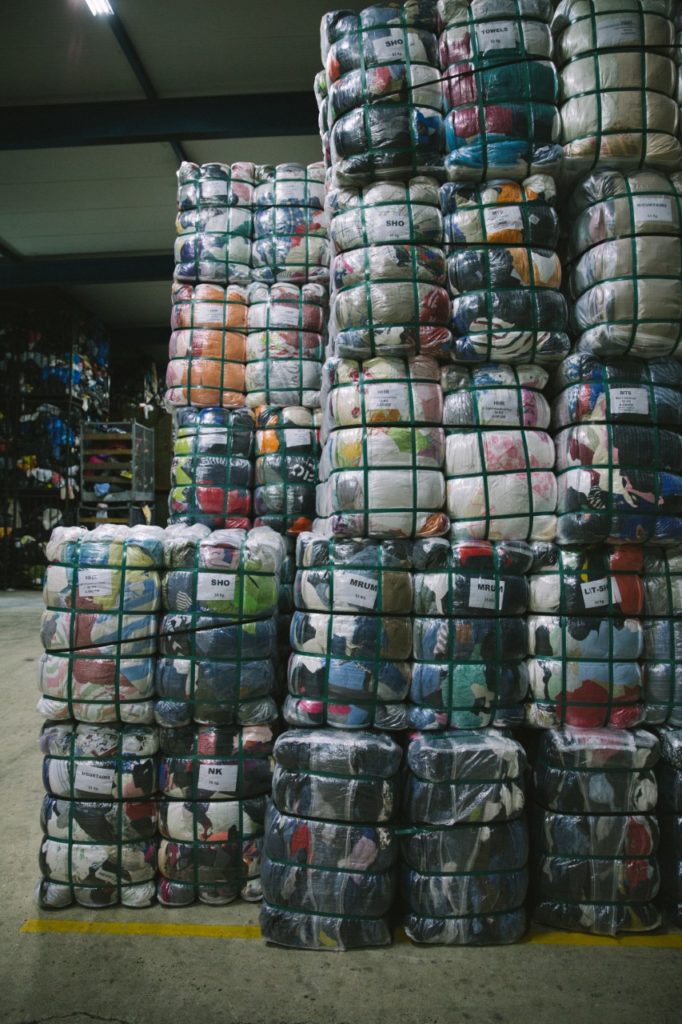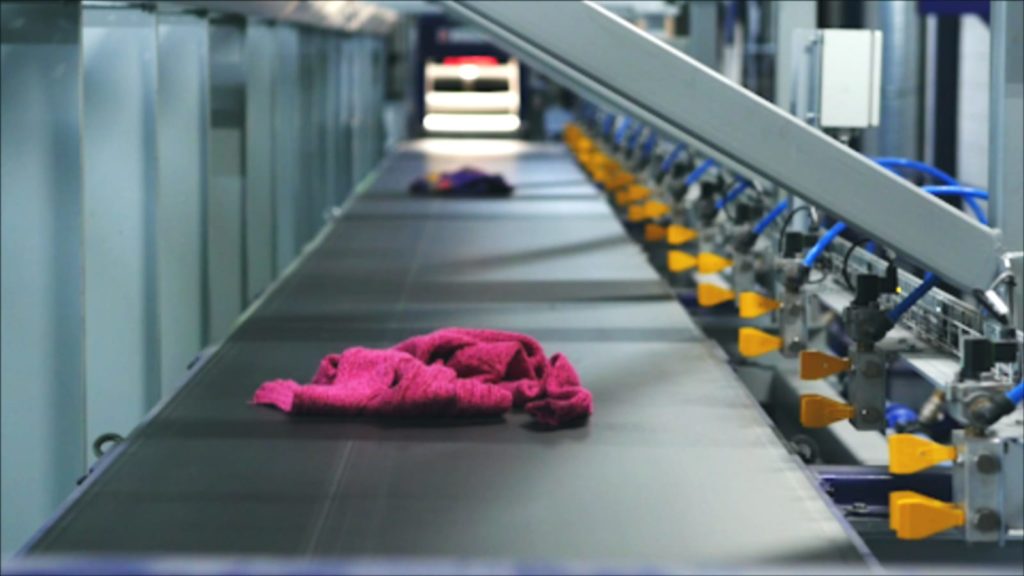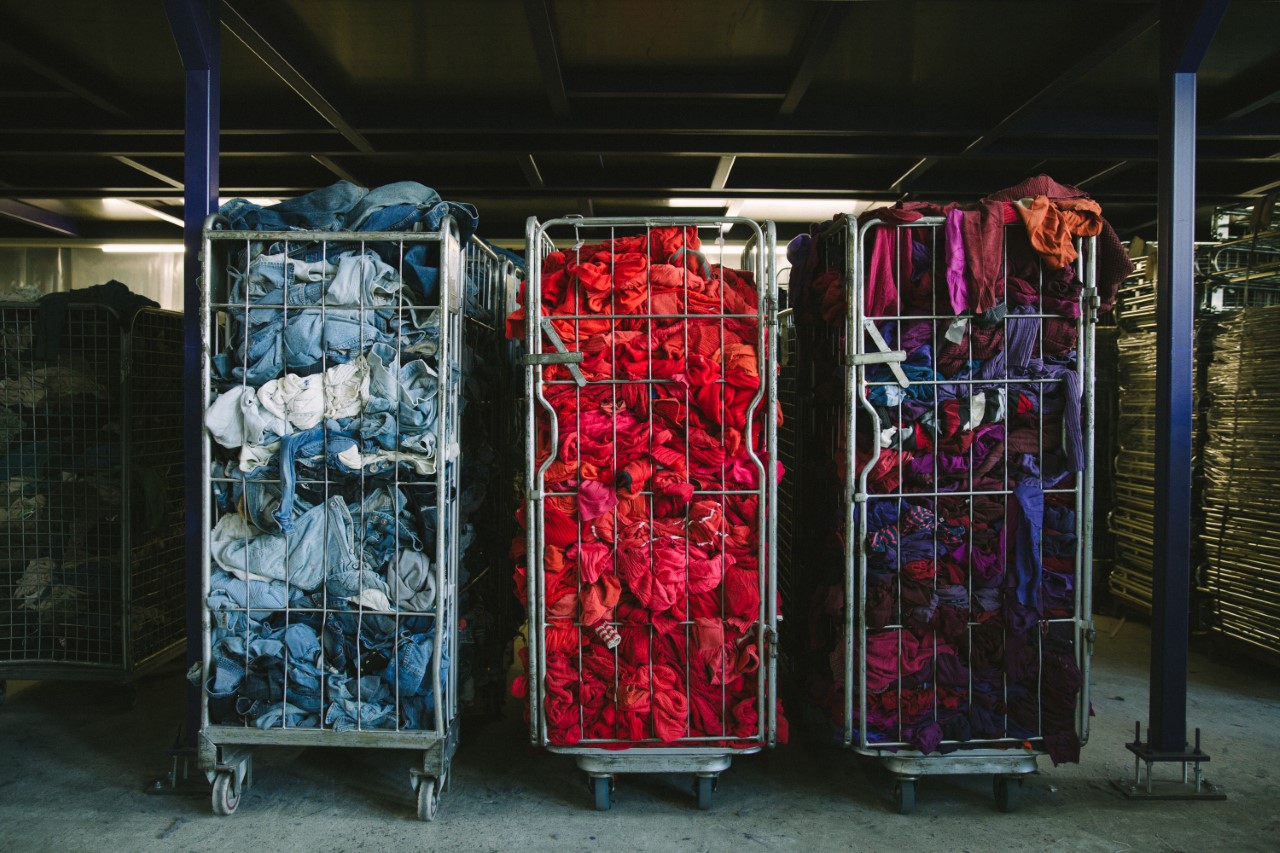Fibersort, a cutting-edge automated sorting technology, revolutionizes textile-to-textile recycling of post-consumer textiles. In the past years, this Near Infrared technology has been optimized, tested and validated to prepare it for its go-to-market. This important milestone became a reality on March 12th when the Fibersort consortium proudly launched Fibersort to the industry and other stakeholders. The consortium partners wrapped up with a clear message: the technology to close the loop on textiles is here, now it’s time for the market to make the shift to recycled materials.
Initially, the market launch of Fibersort was planned during the Fibersort Final Symposium at the sorting factory of Wieland Textiles in Wormerveer. An event that had to be cancelled due to the escalating corona crisis. As an alternative, the project partners hosted over 140 participants during a webinar. At this occasion, they shared the key outcomes of the project, as well as the experiences of relevant players in the textile value chain, from collectors and sorters to recyclers and technology developers. The technology is promising, but many cultural, physical, economic and regulatory barriers must first be overcome to ensure its successful implementation. Main question: how can each of them contribute to closing the loop in the textiles industry?

A common journey
In 2014, a consortium of partners decided to join Wieland Textiles and Valvan Baing Systems to embark on a journey with the aim to make full-automatic textile sorting a reality. In 2016, the Fibersort consortium received funding from the Interreg NWE program of the European Union. “The project partners have commercialized Fibersort by developing and improving the technology, as well as building a business case for automated sorting technologies in North-Western Europe,” explains Hilde van Duijn, Project Manager at Circle Economy. “We are very proud that Fibersort is now operational and able to sort textiles into 45 categories, based on their fiber composition, structure and color”. Fibersort is programmed to sort textiles made from cotton, polyester, acrylic, wool, viscose, polyamide, as well as blends of those materials”.
Smart Fibersorting – a sister company of Wieland – had a crucial role in setting up and optimizing operations of the demo plant as an extension of Wieland’s business to ensure an optimal technological performance of Fibersort. With the development of this plant, Wieland aims to establish a sustainable business model for the upcycling of post-consumer textiles. A model that allows textiles to maintain, rather than lose, their value by becoming feedstock for textile-to-textile recycling processes. Wieland is partnering with Valvan Baling Systems, a Belgium-based company leading the design, engineering, software development and construction of the Fibersort machine.
Ready to produce huge volumes of recyclable textiles
In 2018, Wieland and Valvan launched Fibersort a sorting installation which was hand-fed and able to sort only 15 categories of textiles. Two years later, Fibersort has been transformed into a fully automated sorting system, based on Near Infrared (NIR) technology, with a capacity to sort no less than 900 kilos of post-consumer textiles per hour. Maurits Vandeputte, Project Engineer at Valvan Baling Systems: “We replaced the manual feeding of the previous version of our sorting machine with automated feeding. Now, we have two robots on the line with a camera that can detect where the textiles are, and a long arm of 2 meters in length that takes out the textiles to feed it piece by piece into the scanning system. The input is very diverse: they have all sorts of colors, blends and fibers and that makes the process quite complex, but the new technology enables us to scan and sort all textiles separately into a lot of different categories”. Fibersort has an excellent performance: the updated sorting machine can handle 45 different categories, consisting of combinations between 15 types of colors and 15 types of fibers. Vandeputte: “Today, we have a machine that is ready to produce big volumes of recyclable textiles. We will continue to improve our system and within five years, we will perform even better. It is a learning curve and every new feature we add to the machine, brings new possibilities for further developments. We see a lot of opportunities to improve the performance of Fibersort”.
The market launch of Fibersort is a milestone, but numerous barriers remain before closing the textiles loop. Mitchel Bon, Innovation Manager at Smart Fibersorting: “Eventually, it is our mission that within ten years, every new garment in the international market will consist of at least 20 per cent used fibers. It would be great if we could make this happen together. Our focus will be on creating a cheaper process with a higher through-put. The main difficulty we are facing, is to align our categories to the market demand, because there is still a limited end-market for recycled content. The technology is there, but now we really need the market to make a shift to recycled materials. We need all industry stakeholders to take action for technologies such as Fibersort to live up to their full potential”.
Creating new materials from post-consumer textiles
In the meantime, the mountain of non-rewearable textiles keeps growing. Only in the Netherlands, it is estimated that an average of 40 clothing items are annually disposed per person[1]. The accelerating consumption and disposal practices, coupled with the lower quality of available clothes, leads this fraction of textiles to be in continuous growth. Collectors and sorters are struggling to secure business cases due to a growing amount of non-rewearable textiles as a result of saturated second-hand markets. Automated sorting technologies present an opportunity to turn these growing volumes into new materials for recyclers, benefitting both collectors and sorters. Simon Smedinga, Operational Director at ReShare Leger des Heils: “In 2016, we joined forces with the Fibersort consortium with the aim to achieve new ways of collecting and sorting non-rewearable textiles. It has been an awesome journey and we have achieved much more than expected, such as the robotized feeding of the machine. When it comes to the transition from a linear to a circular system however, there are still many challenges ahead of us.”

Hans Bon, Director of Smart Fibersorting, agrees with Smedinga. “The phase we are in now with Fibersort, is a big milestone for us, but also a first step. When we want to bring our system to the market we need to increase production, but to do this we need the market with us. All partners in the value chain should be aware that we need to reduce our footprint together. That means, we shouldn’t produce new cotton to replace the cotton we already have. We should recycle this post-consumer cotton in new garments in order to close the loop,” Bon states. “The removal of labels for example, is a big issue when it comes to design. We would like to have the use of polyester labels in cotton or woolen garments to be fully abolished or at least to be made circular, which means it is made of the same material as in the garment. Moreover, labels lie and are misleading: the raw materials mentioned on the label are mostly not correct and incomplete. This makes it very hard to detect and sort the fibers in garments in order to facilitate recycling. We really need the help of the industry to solve this issue. Fortunately, the awareness of the environmental impact in the textiles industry is growing. This creates a need for alternative feedstock for the production of new textile products. Now it is up to us to push materials to the market and to anticipate on this growing demand.”
What to do to close the loop?
It is a hard struggle to find end-markets for the upcycling of sorted post-consumer textiles. Recyclers can facilitate the re-introduction of sorted post-consumer textiles into the textile value chain. Procotex Corporation is such a company. It processes a wide range of fibers for various applications, such as yarn spinning, automotive, mattresses, geotextile and other industries. Within the Fibersort project, Procotex has tested and validated the sorted fractions in their textile-to-textile recycling processes. Nicholas Douchy, Production Manager at Procotex, explains: “Especially for this project, we installed machines to process the garments into fibers long enough to re-spin and this was quite successful. We also succeeded in making straight yarns out of wool. Our aim was to increase the amount of recycled content to 60 per cent and we have started to make products, such as pullovers, on the basis of blends of new and recycled materials. Fibersort enables us to make good fibers and high-quality end products. I believe there is a great future for this technology”.
Another company that is developing processes to enable end-of-use textiles to remain in circulation is Worn Again Technologies. Within the project, Worn Again has analyzed and tested the sorted materials of Fibersort in accordance with the technical specifications of its recycling process. Keith Wiggins, CEO Designate of Worn Again Technologies: “The work of the Fibersort team is crucial for building a circular economy. We are a technical company, focusing on a recycling process for end-of-life textiles. The technically most challenging fibers to recycle come from poly-cotton garments. While these garments represent a considerable part of the fast fashion supply chain, it is a burning problem to solve. What we have gained from the Fibersort project, is a specification based on materials that are currently in circulation and require a solution. The market is crying out for a solution and consumers are becoming more and more aware of the environmental impact of the products they buy. Fibersort could contribute to a next step towards a circular economy in default marketplaces. This can only be done through collaboration within the supply chain and it needs to be done quickly. We have to be ready to take risks – by building plants and making things move quickly, so this is an incredible exciting journey for all of us”.
[1] Measuring the Dutch Clothing Mountain: data for sustainability-oriented studies and action in the apparel sector, 2017 (SiAs KIEM VANG funded). Data referenced in this study was sourced from Euromonitor (2017).




